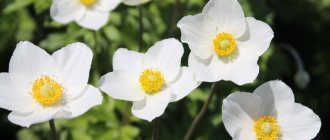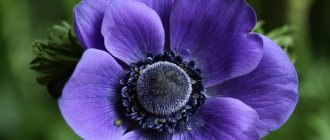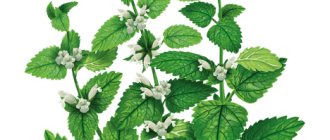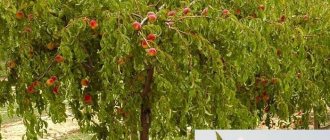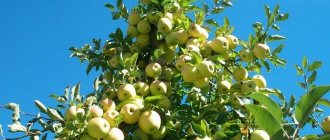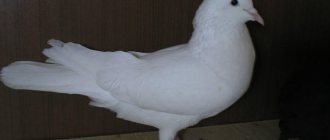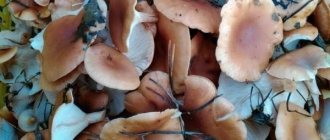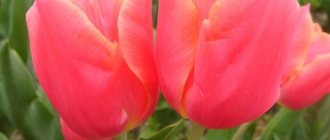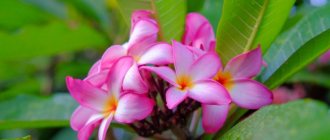Having seen an anemone for the first time, most gardeners fall in love with it forever. These flowers, spreading like a lush carpet, attract attention. Delicate, neat, snow-white, they create a bright and unique accent on the garden plot. Forest anemone is the second name for anemone.
Anemone (anemone): varieties and use in folk medicine
A small flower, depending on the type of white, red, yellow, blue flowers. It grows both in the Northern Hemisphere and in Africa. Blooms in spring. Highly poisonous. Can be used in traditional medicine. Roots and aerial parts are used. Anemone-based products have an antiseptic, analgesic, diaphoretic, and sedative effect. Due to toxicity, alternative options are recommended.
The primrose plant with carved leaves and delicate flowers is popularly called anemone. Its official name is anemone, otherwise anemone. It is a potent, highly toxic agent. According to some representatives of traditional medicine, anemone has a number of beneficial properties. But since it is poisonous, you need to be as careful as possible when collecting raw materials, preparing and using products based on it.
Anemone extract is produced by the pharmaceutical industry and is commercially available. However, using the plant yourself to prepare folk remedies is very dangerous, since there is a high risk of making a mistake with the dosage.
The Russian and Latin names of the plant are associated with the word wind. Leaves and petals can sway even at the slightest breath. In Greece, the birth of the anemone is associated with the legend of Adonis. The hero died because he did not respond to Athena's love. From drops of the young man’s blood, scarlet anemone flowers were born. According to another legend, the anemone appeared during the expulsion of Adam and Eve from paradise. The angry Lord first hit them with cold. And then, having regret, he turned the snowflakes into flowers. Therefore, anemone appears in early spring, immediately after the snow melts.
Types and varieties
All types of this flower can be divided according to their flowering period into spring and summer.
Plants that bloom in spring have a wider range of colors in pastel colors. They are distinguished by grace and soft flowering. You can find crops with purple, pink or blue flowers. Among the spring beauties there are also terry species.
Unfortunately, all anemones that belong to the spring species bloom for a short time. Their flowering period occurs in May, and in July they already fade. Although the leaves of some specimens can be observed even in autumn. One of the popular types of culture is tender anemone. It is a flower with a height of 5 to 10 cm. The most beautiful colors are pink, blue and white.
Another famous species is the oak anemone. The height of this plant is from 20 to 30 cm. The diameter of the flowers is 2-4 cm. The flowers are usually white, but pink or purple shades can also be found.
The most popular summer species is the Japanese anemone. This is a perennial species, the bush of which reaches quite large sizes. Has a powerful root system. The flowering period is from August to October.
Now let's see which varieties of terry anemone gardeners love most.
- "Kenigin Charlotte." The stems of this anemone reach 80 centimeters in height, and it blooms with large buds (8 centimeters in diameter). The buds acquire a pinkish color with a yellow core. And some of them, when properly cared for, emit a pleasant aroma.
- "Margaret". Its flowers are not so fluffy, so the plant is usually called semi-double. Its height reaches 120-130 centimeters.
- "Velwind." The most popular individual of his kind. Gardeners love these flowers because they are easy to grow. Each flower with a yellow core blooms at the end of the stem and has many shoots up to 80 centimeters high. When they bloom, they resemble a large snow-white bouquet.
- "Mount Everest". This variety of flowers has very beautiful buds. It emerges after the snow melts and tolerates frosty weather well. The flower is easy to grow, which is why it is in great demand. The height of the bush is small (20 centimeters), and the flowering period is from 14 to 20 days.
- "Lord Lieutenant." These flowers are interesting with buds of a beautiful lilac color. The height of the bush is 30 centimeters, the diameter of the bud is 8-9.
General characteristics of anemones
Anemone (anemone) is a perennial plant. The root is massive, fleshy, in the form of a tuber or cylinder. It is highly branched, so the anemone forms large thickets.
Root leaves may or may not be present depending on the species. Regular leaves are located on petioles. Their shape varies - separate or dissected. The stem is straight, sometimes with a pubescence, reaches 20, rarely 30 cm. The flowers are collected in semi-umbrella inflorescences. They come in white, yellow, purple and other colors, and consist of six petals. Equipped with perianth leaves.
The plant blooms in spring, in April-May. The fruits, in the form of oblong nuts, ripen in June and can be naked or with fluff. Anemones reproduce not only by seeds, but also by roots, stems, and cuttings. A detailed description of the plant is possible in connection with different types of anemone.
2. Anemone - planting and care
Prefers cool temperatures from 7 to 18° C.
2.2.When anemone blooms
Plants bloom in spring or late summer, from August to September, depending on the type and growing conditions. With proper care, repeated flowering is possible throughout the year.
2.3.Lighting
Some direct sunlight, but not on a hot summer day. Some species prefer partial shade.
2.4. Reproduction of anemones
Anemone flowers are propagated by division or cuttings. Large rhizomes can be divided every two to three years, in the spring. Tuberous species are best divided during the dormant period, usually in the summer. They also reproduce by seeds sown in moist soil in the spring. Growing from seeds requires some effort. They are first stratified in the refrigerator for two to three weeks. Cover the container with glass or a plastic cap to maintain even humidity. Germination takes from two to twenty-five weeks, depending on the type and time of planting.
2.5.How to care
It can be grown in the warm season in open ground, but the plant prefers places protected from the wind. Remove old foliage in a timely manner, shorten tall plants to half their height. It tolerates pruning well. After the aboveground part has withered, when the plants go into a dormant state, the bulbs are dug up and stored in a cool and dry place, sprinkled with sawdust.
Anemone can be used indoors as a forcing plant and get a flowering bush for any holiday; for this, the plants are dug up in the fall along with a lump of earth and transplanted into a suitable size pot. Plants are kept in a cool and relatively dry room at a temperature of 0 - 2 ° C. In January, the temperature is increased to 8 - 12 ° C, and with the appearance of the first signs of new growth, watering and fertilizing are resumed.
2.6.How to transplant an anemone
Before planting anemones, soak the tubers overnight and then place them in dried, fertile soil, in light shade to a depth of about 7 - 10 cm.
2.7.Soil for indoor anemone
The potted plant is easy to grow in moist, well-drained soil. Prefers fertile, humus-rich, neutral or slightly alkaline soil.
2.9.Purpose
A beautifully flowering, very showy plant, suitable for cutting, and has a pleasant aroma. Tuberous species can be used as forcing plants.
2.11.Water anemones
Water regularly, especially during the first growing season, to ensure a deep, extensive root system. The soil should not dry out. Avoid wet, poorly drained soils, especially in winter.
2.12.Pests and diseases
There are no serious problems with insects; with proper care, the flower is also rarely sick. Sometimes leaf spots, powdery mildew and rust may appear. Sunburn on leaves in hot, dry, sunny summer conditions.
Among insects, the flower can be attacked by leaf miners, aphids, nematodes, thrips, and whiteflies. When grown in open ground, bushes can be attacked by slugs and snails.
2.13.Note
All parts of the plant are poisonous. The skin may become inflamed and blistered upon contact with fresh plant juice. In medicine, anemone is used as a remedy to treat cramps, menstrual irregularities and emotional distress.
Hydroponics.
Varieties of anemone
The distribution range of the anemone is quite wide. The plant is found in the European part of the Eurasian continent, including Russia. Some species grow all the way to the Arctic coast, others in Africa and the Mediterranean Sea. Prefers deciduous forests, forest edges, lawns, grassy and mountain slopes.
Most often used in folk medicine
Buttercup anemone is also called buttercup, buttercup because of its resemblance to buttercups. And the forest one is called oak anemone. It often grows near oak trees. It is convenient to compare two types of plants using a table.
Table - Similarities and differences between oak anemone and buttercup anemone
Popular types
Among the variety of anemone species, in addition to buttercup and oak anemone, several of the most famous and widespread can be identified.
- Altai anemone. The description reminds me of the forest anemone. It blooms very early, has the same white petals, but with a slight lilac tint. A peculiarity of this species is the strong pubescence of the stem, petals, and leaves. In the places where it grows it is called snowdrop.
- Crown anemone. Most often used in ornamental gardening. The flowers are large, double and simple with a beautiful center.
- Japanese anemone. It blooms later than others and grows taller than others. The stem reaches a height of up to 1 meter. The inflorescences are lush white or pink.
- Anemonastrum. A relative of anemones, the second name is anemone. It itself includes dozens of species. Height up to half a meter or more. White flowers are collected in umbrellas. Anemonastrum's habitat is meadows and tundra.
Article on the topic: Golden rod - useful properties, description
Brief description of buttercup anemone
Ranunculus anemone
(
anemone
) is a perennial herbaceous plant with a long, creeping, well-developed rhizome of a dark brown color, from which several scale-like leaves on long petioles extend.
In spring, a stem with leaves and a flower grows not from a seed, but from a bud, which is located at the end of the rhizome. The rhizome is located horizontally in the topmost layer of soil, directly under fallen leaves. It looks like a twisted, knotty knot of brownish color. If you break such a rhizome, you can see that it is white and starchy inside, like a potato tuber. Here, reserves of nutrients are stored - “building material”, which is necessary for the rapid growth of above-ground shoots in the spring.
The development of anemone begins unusually early - at the end of winter, under the snow. At this time, the plant can already notice a bud opening at the end of the rhizome. A very small whitish sprout, curved like a hook, first appears from the bud. As soon as the snow melts, this sprout quickly lengthens and straightens. The stem of the anemone is from 10 to 30 cm in height, erect, glabrous or sparsely hairy. The leaves are semi-leathery, three-lobed, deeply heart-shaped at the base, often covered with a purple bloom below. Soon the plant blooms, this time falls in April - May. The flowers are bright yellow, with three small, sepal-like, green involucre leaves and 6 blue, petal-like sepals; corolla is underdeveloped; There are many stamens and pistils. The plant is pollinated with the help of rainwater: this occurs when the erect perianth is filled with water, on the surface of which pollen grains float. Externally, anemone flowers are a little reminiscent of buttercup flowers. When the anemone blooms, forest trees and shrubs are just beginning to bloom. At this time there is a lot of light in the forest. After the trees put on leaves and it becomes dark in the forest, the development of the anemone ends; it has already borne fruit - achenes with a short curved nose. She completed her mission. After flowering, the above-ground part of the anemone turns yellow and dries up, the stem with leaves withers and falls to the ground. At the beginning of summer, no traces of the plant remain. Only in the soil is a living rhizome preserved, which gives rise to a new shoot with leaves and a flower the following spring. So, the anemone lives, in fact, only a few weeks a year, and the rest of the time it is in a state of rest, even in summer. Almost all plants turn green in the summer, bloom, and bear fruit, but the anemone disappears from sight during this entire time.
Anemone is dangerous for animals only in its fresh form. The wood anemone (Anemone silvestris) has large, white flowers, shaped like a small rose with five petals. Usually she has only one flower, rarely two. There are 17 species of anemone found in Russia, most of them are poisonous. Only some types are used.
Useful action
Some traditional medicine recipes claim that herbal infusions and decoctions are suitable for oral use. Fresh anemone is used externally. The plant is believed to have many beneficial properties.
- Abundance of useful acids. They serve to improve metabolic processes.
- Vitamin C. Strengthens the walls of blood vessels and acts as an antioxidant.
- Bactericidal and analgesic effect. Allows the use of anemone products to combat infectious pathologies.
- Anti-inflammatory effect. Thanks to it, anemone helps treat rheumatism, atherosclerosis, rheumatoid arthritis, and gout.
- Antitumor effect. The plant can prevent the development of benign and malignant tumors. That is why anemone is used to treat oncology.
Anemone care
Caring for anemone is very simple. The most important thing is to ensure the correct level of humidity throughout the growing season. If the soil is over-moistened, rot may appear on the roots, which will lead to the death of the entire bush. If there is not enough moisture, especially during the formation of buds, this will negatively affect the growth and flowering of the plant. To achieve the optimal level of humidity, such a flower must be planted on a hill, and the area must have good drainage. It is recommended to cover the surface of the area with planted anemones with a layer of mulch (peat or fruit tree leaves), its thickness is about 50 mm.
Watering
In spring, such flowers need to be watered once every 7 days. If it rains regularly in the summer, then anemones do not need to be watered, with the exception of crown anemone when it blooms. If it is dry and hot in the summer, then watering is carried out every morning and evening after the sun sets.
Top dressing
During the flowering period, such a plant should be fed with organic matter (you cannot use only fresh manure). And in the fall you need to feed them with complex mineral fertilizer. If all the necessary fertilizers were added to the soil during planting, then there is no need to feed the anemone at all.
You should also systematically loosen the soil and pull out weeds; however, you should not use a hoe for weeding, as there is a risk of injury to the fragile system of flower roots.
Diseases and pests
This plant is disease resistant. Snails or slugs can live on the bushes. They must be collected by hand, and the plants themselves are sprayed with metaldehyde. Sometimes leaf nematodes or cutworm caterpillars (winter worm) settle on the bushes. Bushes infected with nematodes must be dug up and burned, and the soil on the site must be replaced.
Anemone breeds
This flower can be propagated by dividing the rhizome, seeds, tubers, or dividing the bush. How to grow anemone from seeds and propagate by tubers is described in detail above. To divide the rhizomes in the spring, they must be removed from the soil and divided into parts, the length of which should be 50 mm. Each division should have a bud; they are planted in loose soil, placed horizontally and buried only 50 mm. Such an anemone will be fully mature only after 3 years. If the plant is 4 or 5 years old, then it can be transplanted by dividing the bush.
After flowering
When growing anemones in mid-latitudes in the fall, they need to be dug up and prepared for wintering. The above-ground part of the dried tubers must be removed, then they are buried in sand or peat and stored in a cool, dark room, for example, in a non-damp basement. If it is expected that there will be no frost in winter, then the flowers can be left in the soil. To do this, the surface of the area must be covered with a thick layer of fallen leaves or covered with spruce branches, which will protect the plants from frost.
Contraindications
All types of anemone are poisonous. With proper preparation and use of products from it, a therapeutic effect is possible. However, there is no guarantee that it will be possible to correctly calculate the dosage and follow all the preparation rules. There are also absolute contraindications for use.
- Pregnancy. The plant has a pronounced abortifacient effect. In the early stages it can cause pregnancy to fail. At later stages there is a miscarriage.
- Lactation. Toxic substances penetrate into milk and can cause poisoning in an infant.
- Children under three years old. Their body is sensitive to toxic substances; the liver is not yet able to neutralize them at the same level as in adults. Older children - with caution.
- Kidney diseases. Pathological changes lead to disruption of excretory function, toxic substances are retained in the body.
Anemone: planting and care in open ground in the Urals
In the Moscow region, Siberia and the Urals, where summers are short and winters are frosty up to 30 °C, anemone tubers must be dug up for the winter. They are stored in boxes with sand in a room where the temperature is no more than 5 °C. Once a month, the soil in the boxes is moistened.
Plants are planted in the spring, when warm weather sets in without the risk of frost returning. After the upper part of the plant has withered, its roots are dug up to be preserved for the winter. Another option is to collect seeds and plant seedlings. It is better to use the first method, since the grown seed flower will not bloom in the first year.
In the southern regions, a place for anemone is chosen in the shade. In the northern regions, on the contrary, it is necessary to select a sunny place where there will be a lot of light and the plant will delight with beautiful flowering.
Important! Once every three years it is necessary to plant young animals
Anemone varieties
Preparation and storage
The most powerful healing effect is obtained from medicinal raw materials prepared during the flowering period - in April-May. The stems are used along with leaves and flowers. When cutting, be sure to wear gloves. Direct contact of the plant with the skin can cause irritation and an allergic reaction. The collected raw materials are dried in the shade in a ventilated place. Or in an industrial dryer at a temperature not exceeding 49°C. Dried herbs should be stored in glass containers with lids. Shelf life is no more than a year.
Reproduction of wood anemone
White forest anemone can reproduce by both vegetative and seed methods. These methods are discussed in more detail below.
Important! During vegetative propagation, anemones should not be placed closer than 60 cm to each other.
Tubers
Before planting, the tubers are soaked for 6 hours in epine. Then they are placed in a hole 15 cm deep and 30 cm in diameter. First, a layer of humus 3-5 cm thick is laid on the bottom of the hole.
The tuber is “planted” in the hole with the sharp end down. After which it is sprinkled with soil, compacted and watered.
Plots
The mother plant is dug out of the soil and its root is divided into sections 5 cm long. The remaining part of the root and stem is planted back.
Five-centimeter plots are placed in a loose substrate of sand and peat, having previously been treated with epin. This is followed by watering, covering with film and transferring the container with the cuttings to a warm place, for example, to a greenhouse.
Repeated watering is carried out every 3-4 days. As the leaves appear, the intensity of watering is increased. The film is removed after the roots appear. Plants are planted in open ground the following year.
Seeds
Anemone can also be grown using seeds. The plant tolerates reproduction well in this way without losing any hereditary characteristics characteristic of many domesticated crops.
Important! Since in this case the plant is formed “from scratch”, flowering of anemones propagated by seeds occurs starting from the age of three.
Seed propagation of anemone without the use of seedlings is very simple: just plant the seeds in soft soil at the end of autumn and sprinkle them with a 10-15 cm layer of straw. In such conditions, the seeds will receive natural stratification and sprout perfectly.
Seedlings
If you decide to propagate a plant from seeds using seedlings, you should prepare for several stages of this process: germination of seeds, their stratification and direct cultivation.
Sequence of seed propagation of anemone using the seedling method:
- The seeds are mixed with the substrate in a volume ratio of 1 to 3. The substrate can be coarse river sand or peat. The resulting mixture must be mixed well and moistened.
- The mixture is placed on the bottom of the box and placed in a shaded place. Once a day it must be sprayed with a spray bottle.
- After the seeds swell, soil 2-3 cm thick is placed on the substrate. The soil is a 1:1 mixture of garden soil and humus. Next, the box with seeds is transferred to a cold room with a temperature no higher than + 5 °C.
- After the first sprouts hatch (1-2 weeks), the box with the seeds is taken out of the room, sprinkled with snow or soil, and a 10-12 cm layer of sawdust is poured on top.
- The box is kept in the cold for 30-60 days. Then they dig it up and take it indoors again.
- Transplantation of seedlings to a permanent place is carried out after the appearance of its second true leaf.
After stratification, anemone seedlings are placed in a warm and sunny place. Caring for seedlings consists of daily watering with a spray bottle and removing weeds. No specific care (feeding or picking) is needed.
Recipes
Decoctions, infusions, and alcohol tinctures are prepared from anemone, mainly oak wood. There are many recipes for internal use on the Internet. However, it is better to limit it to external use.
Tincture for joints
What heals. Joint pain, arthritis, arthrosis, rheumatism. Reviews indicate that this effective remedy eliminates pain, swelling, and improves joint mobility.
- Place dry leaves weighing 100 g in a glass or enamel container.
- Pour 1 liter of quality vodka.
- You can also use medical alcohol in the same amount.
- Close the container and put it in a dark place.
- Keep for ten days, shake occasionally.
- Strain through a fine sieve and cheesecloth.
- Apply as a rub up to two times a day in case of joint and rheumatic pain.
Infusion for skin diseases
What heals. Dermatitis, dermatoses, poorly healing wounds. There are recommendations for using the product internally for kidney diseases, cystitis, and for removing stones. But for the treatment of kidney diseases, use with caution and after consulting a doctor.
- Take oak anemone herb in the amount of one tablespoon fresh or one teaspoon dried.
- Pour a glass of regular cold water.
- Leave for six to eight hours.
- Strain.
- Wash skin areas with dermatitis, dermatosis, poorly healing wounds or apply lotions.
Tincture for cancer
What heals. Toxic substances in anemone, especially buttercup, are considered capable of fighting cancer. They inhibit the development of tumors. The product should be prepared and used with great caution and after consultation with a doctor.
- Work outdoors and always wear gloves.
- Pass dried anemone grass with leaves and flowers through a meat grinder.
- Take a glass of crumbly chopped herbs.
- Place in a jar and pour in 500 ml of high-quality vodka.
- Place in a dark place for two weeks.
- Strain well.
- Store in the refrigerator, cellar.
- For oncology, dissolve 20 drops of the product in 100 ml of water and drink three times a day before meals.
- Before the first dose, dissolve the tincture in water and lubricate the skin on the bend of the elbow or behind the ear with the liquid. It is believed that a remedy that produces a slight burning sensation will be effective. If the discomfort is strong, you need to reduce the number of drops. If, on the contrary, nothing is felt, add tinctures. Thus, find the most suitable proportion.
Article on the topic: Rough cornflower - useful properties, description
In addition to their medicinal effects, anemones are also valued for their decorative qualities. All of them can be used in landscape design and gardening. The most valuable in this regard is the crown anemone, which has a wide variety of colors. However, both wood anemone and buttercup form quite nice thickets. They are more preferable for garden decoration than for medicinal purposes.
Seed preparation
Caring for and planting anemones (the photo above will allow you to evaluate the decorative qualities of the plant) requires proper preparation of the seed. As soon as all activities for processing the land plot are completed, we proceed directly to the seeds. It is perhaps worth mentioning in advance that anemone has a rather low germination rate. If you plan to use planting material that was harvested last year, be prepared for the fact that at best 25% of seedlings will germinate from it. Although in gardening there are some clever tricks that can increase the percentage of seed germination. To do this, it is necessary to expose the planting material to extreme cold for a couple of months. For experienced gardeners, this event is better known as “stratification”:
- Take anemone seeds and add a small amount of peat or sand to them. You should end up with a mixture consisting of 1 part seeds and 3 parts soil.
- After this, we spray this mixture with water and continue to keep it moist until the seeds swell.
- Select a suitable container and place the seeds in it. You will also need to add a small amount of substrate here, after which the earth will be slightly moistened again.
- After this, the containers must be left in a well-ventilated area where the air temperature does not rise above 5 degrees. Here they will remain until the first shoots appear.
- As soon as the seeds hatch, they must be transferred outside and buried in the ground or snow. To protect from severe frosts, the place where the seeds will lie must be covered with straw or sawdust.
- The plant is transplanted into boxes in the first weeks of spring.
Although there is a faster way to prepare anemone seeds for planting. To do this, you need to take boxes of soil, plant seeds in them, and then bury the containers directly on the site. As a result of the fact that the crops will spend the entire winter outside, a stratification effect will be ensured under natural conditions. With the onset of spring, the boxes are removed from the ground. All that remains is to transplant the seedlings to a new location.
Botanical description
Forest anemone - novice gardeners may not often hear this name. But as soon as you show a flower or say its name in Latin (“anemone sylvestris”), everything immediately becomes clear. The forest anemone is the most common anemone, familiar to the ears and eyes.
Forest anemone blooms later than other anemones - its flowering begins in mid-late May and ends by mid-July. On average, it blooms for about 25 days. The anemone blooms again in August, and the fruits appear in June.
Numerous anemone fruits look like small flattened nuts up to 3 mm in size; the stamens are short and have a rich yellow color.
Forest anemones: description with photos, use in landscape design
This type of anemone can decorate any flower bed. Pairs well with daffodils, tulips, hydrangea and lilac. Anemone looks beautiful when planted near low junipers.
Wood anemone is divided into two subgroups:
- Oak anemone (Anemone nemorosa). It grows in European oak forests, forming from its thickets a low green carpet up to 25 cm high. Flowering begins at the end of April and lasts for 3 weeks. At this time, white flowers with a diameter of 3 cm bloom.
- Buttercup anemone (Anemone ranunculoides). This variety of wood anemone blooms with yellow flowers for a week. The flowers are significantly smaller than the previous species, but also completely cover their bushes.
Habitats
You can meet anemones in nature quite often. Places where anemones grow are not difficult to find. The plant chooses to live in dry areas where the soil is not oversaturated with moisture, with a temperate climate - forest edges, steppes, meadows, shrubby slopes, sparse oak and coniferous forests, as well as rocky cliffs.
In nature, anemone lives in the forests of Europe, Central Asia, Western and Central Siberia, as well as in Mongolia, China, Ukraine, Belarus, European parts of Russia and the Caucasus.
Wood anemone is the only type of anemone that can easily take root in sandy soils and develop favorably in such areas.
general description
Oak anemone (anemone) is a herbaceous plant that usually reaches a height of no more than 30 cm. The root system of this flower is fibrous, so it grows quickly in areas and takes on the appearance of a snow-white carpet. Wild plants of this species can most often be found in western Europe, the European part of Russia and the Mediterranean. Anemone prefers to grow in deciduous forests, where there are many shaded areas and loose, fertile soil. Since the plant usually grows in groups, it forms extensive thickets in areas.
Anemone is a perennial flower that blooms annually for 40-50 years. Its reproduction occurs both through seeds and through root shoots. The oak anemone has an erect stem on which only one flower of pink, pale purple or white is formed. The flower consists of 6 petals; due to the lack of sepals, they begin to play at the slightest gust of wind. The flowering period of the anemone begins in April and lasts approximately one month; in July, the plant produces a fruit in the form of a box with numerous black seeds.
Anemone is also considered a medicinal plant, which is known for the following healing properties:
- bactericidal;
- painkiller;
- antifungal;
- diaphoretic;
- expectorant;
- sedative.
It must be remembered that this wild plant is poisonous, so all drugs, decoctions and infusions based on it can be used only after consultation with doctors.
The main advantages of growing oak anemone include the fact that it has high frost resistance and can withstand temperatures down to -30C. The only thing is that when planting plants in open ground, it is necessary to mulch the soil for the winter. This will protect the flower from freezing in a winter with little snow. In addition, the anemone is unpretentious in care; it is enough to plant it in an area with light, slightly acidic soil and occasionally water it (usually the plant gets enough natural moisture in the form of rain and melting snow).
As for the use of a flower in the landscape design of a summer cottage, it is considered an original decoration for any flower bed. The plant looks especially chic in compositions with veronicastrum, aconite, asters and ornamental grasses. However, before planting oak anemone in the garden, you need to remember about its active growth and select the right “neighbors”.
Conditions for growing in the garden
You can find the flower not only on the edge of forests, but also in city flower beds or in front gardens in front of houses. Anemones are often planted together with other plants, thus creating a composition, so the plant can be classified as decorative.
As mentioned earlier, anemone is drought-resistant and grows well in dry, sandy soils, but in loose, moderately moist soil it blooms much better. The ideal place for planting a flower would be semi-shaded areas, but if there are none nearby, sunlit areas are also suitable.
The soil on which the anemone will subsequently grow should under no circumstances be heavy. Sand or humus will help make it more suitable for the plant.
What does anemone look like and when does it bloom?
In nature, there are about 100 species of anemones (anemones) from the Buttercup family. These are forest, meadow, and mountain herbaceous plants characteristic of many temperate climate landscapes of the Northern Hemisphere. Some species are used in floriculture.
What do different types of anemone look like and when do these plants bloom? In nature, oak anemone and buttercup anemone are ubiquitous. These are early flowering perennial plants up to 20 cm tall with horizontal rhizomes. There is one pinnately dissected basal leaf, but more often it is absent. Three similar bract leaves on relatively long petioles form a whorl just below the medium-sized (about 3 cm in diameter) flowers.
The flowers are solitary, the oak anemone is white, and the buttercup is yellow. They bloom in April-May, usually before the leaves bloom on the trees. In mid-summer they go into a dormant state. Garden forms with simple and double flowers in white, pink, blue and purple tones are obtained from the oak anemone. Both types of anemones produce massive self-seeding and are easily propagated by freshly collected seeds and cuttings of rhizomes.
Forest anemone is one of the most beautiful representatives of this genus, but, unfortunately, it is extremely rare both in nature and in gardens. Plant height is 25-30 cm. It has from 2 to 6 pinnately dissected openwork basal leaves.
Unlike other early spring species, forest anemone produces a second generation of leaves, maintaining its decorative appearance in the summer.
Pay attention to the photo, the bracts of the forest anemone plant are located in the middle part of the peduncle, and not at the flower itself, as in the oak anemone:
The flowers are solitary, large (up to 7 cm in diameter), white, with a pleasant aroma, outside at the base with a purple tint, silky, pubescent. When does the forest anemone bloom and how does it reproduce?
This plant species blooms for a long time, occurring in April-May, and is propagated both by seeds and by dividing rhizomes. Prefers calcareous and sandy soils.
Crown anemone grows naturally in the Mediterranean and Asia Minor. A herbaceous perennial, the underground part of which is a knobby, “spreading” tuber. Above the basal pinnately dissected leaves rise peduncles 25-30 cm high with large, single, bright flowers of various colors - red, blue, white, pink, lilac, bluish. There are varieties that have flowers with a border or spots of a different tone.
As you can see in the photo, anemone flowers of this species can be either simple, double or semi-double:
In the middle zone, plants bloom in May-June. They do not overwinter in open ground. They are cultivated like dahlias - the tubers are dug up in the fall and stored in a frost-free room, and planted in the ground in the spring. When dividing tubers you need to be careful, as they are very fragile. The fracture sites are sprinkled with charcoal. It can also be propagated by seeds, which are sown in autumn or spring.
Crown anemone is widely used for cutting in winter. It can be driven out by certain dates (New Year, February 23, March 8) by growing seedlings in a greenhouse.
Look at the photo to see what different types of anemones look like:
Features of care
This plant is not particularly whimsical, but you need to know some rules for caring for it so as not to harm it.
Anemone is drought-resistant; it can only be saturated with moisture from precipitation. If there is no rain for a long time, then you can water the flower.
Anemone needs regular watering during the period of active growth. It is important not to overdo it and not to flood the soil with water. This will not help saturate the soil with the necessary moisture for a long time, but will only lead to waterlogging, which will lead to rotting of the anemone roots.
Under no circumstances should the plant be weeded out. Its roots are not located too deep, so such soil treatment can only damage the roots. All weeds must be pulled out by hand. It is advisable to do this after the flower has received a sufficient amount of water, but not immediately after watering.
Article on the topic: Arbutus - beneficial properties, description
It often becomes necessary to plant anemone, since it grows quickly and can easily move into the territory of neighboring plants. In 3-4 years, a forest anemone can grow into a bush with a diameter of up to 30 cm.
Planting anemone
Having chosen a suitable place, you need to prepare it. In October, the site must be dug up and organic fertilizers added to the ground - urea, compost, leaf humus. Heavy soil should first be loosened and a little sand added. If it is acidic, then it will not be superfluous to perform liming. To avoid stagnation of water, drainage should be provided, which can be used as expanded clay, pebbles, or broken brick. Further steps for planting an anemone plant are as follows:
- Make grooves about 10 mm deep.
- Fill them with seeds, trying to scatter them in an even layer.
- Moisten and cover with a 15 cm layer of straw.
- Next year you can expect good shoots.
Beneficial features
Anemone grown in a flower bed is a wonderful decoration for the home. But those flowers that grow in nature have many beneficial properties and are widely used in folk medicine.
For treatment purposes, only the above-ground part of the flower is used. The herb is collected during the flowering period of the anemones, and then dried outside, in the shade, or in well-ventilated rooms. You need to spread the plant in a thin layer and stir it periodically.
External use of anemone is possible in case of skin itching, rheumatism, and skin diseases.
Based on what was written above, we can say that the forest anemone is not a particularly whimsical flower, growing both in the wild and in home gardens and front gardens. The description of its medicinal properties amazes with the variety of uses of the plant for medicinal purposes, and the photos delight the eye with the simplicity and elegant tenderness of flowering.
Rules of care
With proper planting and care, the anemone blooms profusely. Caring for the plant is quite simple: just maintain the required level of humidity and monitor the growth of weeds.
Fertilization and watering
If the wood anemone grows in the shade, then frequent watering is not required. It is necessary to monitor the moisture level and if the soil dries out, water the bed in a timely manner.
Mulch in the form of fallen leaves of apple or pear trees, peat or purchased mixtures will help increase soil moisture. Due to the mulch layer, weeds do not grow and moisture evaporates more slowly. The mulch thickness is 5 cm.
Fertilize the anemone with complexes consisting of minerals. They are used only during the flowering period.
Plant pruning
Anemone does not require pruning if its flowers are not used to make a bouquet. After flowering, the aboveground parts of the plants die off without additional intervention.
Even if an anemone is dug up for the winter, it is not recommended to trim its leaves so as not to damage the integrity of the plant.
During the growing season, it is not recommended to disturb the anemone. If neighboring flowers are cut or the lawn is mowed, it is better not to touch the anemones.
Preparing for winter
If the region experiences severe frosts, you can dig up the anemone rhizome. In winter it is stored in a cool place and planted in the ground in the spring.
In central Russia, the anemone is left in open ground for the winter. The bed is covered with tree branches or spruce branches. An example of covering with spruce branches is shown in the photo:
Forest anemone, anemone
Forest anemone, or Anemone, has a powerful vertical or oblique rhizome, with a fibrous root system. There are from 2 to 6 basal leaves, they have long petioles, which are densely pubescent with soft long hairs. The leaf blade is dissected and also covered with hairs pressed to the surface; the hairs are rarer on top and thicker on the bottom of the leaf.
The erect stems of anemone are pubescent with the same hairs as on the leaf petioles; closer to the top, the pubescence becomes especially dense. Stem leaves begin to grow above the middle of the peduncle. The blades of the stem leaves are the same in shape as those of the basal leaves, but sit on shorter petioles 1–2 cm long.
The flowers are quite large - from 3.5 to 7 cm in diameter. The tepals are elliptical or obovate in shape, pure white, slightly violet on the underside and densely pubescent with appressed hairs. The yellow stamens are much shorter than the white tepals.
White flowers with yellow stamens. How nice!
Pistils are ovoid. At the end of flowering, the Forest Anemone produces numerous small fruits, flattened, with a short nose, also equipped with white-tomentose hairs.
The anemone is blooming. Numerous fruits are already visible, still green.
Anemone transplant
Over time, the forest anemone flower grows, oppressing other crops. The question may arise about moving it to another place. It is carried out in stages:
- Choose a time for transfer. It is better to carry out such work in the spring, when the first shoots hatch.
- Digging up the roots and adventitious buds.
- Move them to a new location, adhering to the rules described during the planting process.
- Some people prefer to carry out such work in September at the end of the season, but if the winter is cold and snowless, the plant may die.
Anemone flowers. Description, features, types and care of anemones
Among the garden perennial flowering plants, there is one amazingly beautiful creation of nature - the anemone. Temperate climate zones are its most favorite places to grow.
Anemone flowers are resistant even to severe frosts, so some of their species can grow in areas close to the Arctic climate. More than half of the species of these amazing flowers bloom in spring.
Pictured is the crowned anemone
Another name for the plant is anemone, translated from Greek means “daughter of the winds.” And this is indeed true. Anemone flowers react with special trepidation to every touch of the wind, to its most insignificant gust.
Description and features of anemone
This plant of the buttercup family has one distinctive feature - ideal, beautiful, medium-sized inflorescences of a variety of brightly colorful colors.
His tenderness manifests itself in moments when the wind blows. There is nothing more beautiful and tender than the petals of an anemone plant blown by the wind. With the arrival of the first rays, flowers delight with their divine beauty.
And when the sun sets, they go to bed, closing their inflorescences. The anemones in the photo are something enchanting and eye-catching. You can endlessly admire this beauty.
In real life, when the picture comes to life and the inflorescences gently flutter in the breeze, the fantastic attractiveness and beauty of the flower doubles. In Europe, Israel, Syria and Libya, this plant grows in its natural habitat.
The photo shows the Japanese anemone
There are about 160 species of it. Their distinctive features are not only their external characteristics, but their flowering time. This fact confuses many novice gardeners, and they sometimes confuse anemone with other plants.
Thanks to such a wide variety of species and different flowering times, buy anemone throughout the whole year. But most of all flowering occurs in the month of May.
The roots of the anemone are quite strong and powerful, they are located in a vertical position in the ground. The entire root system is characterized by increased toxicity.
The average height of the plant reaches up to 50 cm. Its leaves are held on the stem with the help of petioles. The leaves come in two or three separate shapes. Closer to the ground their shape changes a little, there they are round.
In the photo there is a purple anemone
A single inflorescence usually has 6-7 petals of various colors - white, pink, red, blue with a diameter of up to 6 cm. The life of each flower does not last long - from 7 to 14 days.
Pollination of inflorescences occurs thanks to insects. The end of flowering is characterized by the formation of fruits in the form of oval-shaped nuts with a white pile covering.
Planting and propagation of anemones
Planting an anemone does not require any special work or knowledge. The most important task in this case is to determine the growing point of the flower. Initially processed and specially prepared, the tubers, ready for planting, are indicated by bud tubercles.
The photo shows a hybrid anemone
There are no difficulties with them, everything is very clear how to plant them. Those who are not well informed in floriculture need to remember that the top of the tuber of this plant is flat, so you need to lower the sharp end into the ground. If you have any doubts about the tuber, you can plant it on its side.
The size of the hole for this flower should be 30-40 cm, at least 15 cm deep. Its bottom is covered with humus and ash, after which a tuber is placed in it and sprinkled with earth. Planting anemones in open ground must necessarily end with thorough watering.
As for planting seedlings, this can only be done if the plant has at least two leaves. For this purpose, choose a dark place. You can sow seedlings in the autumn, but they must be carefully hidden from winter frosts.
This anemone does not bloom immediately, after about 3 years. Due to the fact that there are so many types of anemone, it is possible to achieve almost constant flowering, from April to late November. The main thing is to study the varieties and decide on their choice.
Planting anemones in spring is mainly done using tubers. It is only important to initially prepare them with the help of growth stimulants and make sure that the fertile soil has drainage.
Pictured are anemone tubers
It is not worth planting it deeply. The hole should be no deeper than 7 cm. A palm should fit between the flowers. It is necessary to initially control soil moisture. Stagnation of water in it is detrimental to the flower.
These flowers reproduce by seeds, rhizomes and vegetatively. The first method is not particularly revered by gardeners due to its complexity. It is necessary to have freshly collected seeds. But this cannot guarantee their complete germination.
The second method of reproduction is considered the easiest and most acceptable for beginners. This method is extremely simple. It is enough to carefully separate some part from the rhizome and plant it in the ground.
Vegetative propagation using anemone roots and tubers is also considered an easy, affordable and most often used method. Young anemone flowers can tolerate replanting without any problems.
In the photo there is a forest anemone
For more mature people, this procedure is too painful. After transplantation, the flower needs some time to recover. It is important initially, before planting anemones to decide on a place for planting and prepare planting material.
Choosing a landing site
Many gardeners are attracted by both the beauty and the early flowering of anemones. Therefore, they willingly plant it in flower beds.
The plant is perennial and once, having planted an anemone in the garden, he will enjoy its flowering for up to 10 years. These flowers are poisonous, which is why they are avoided by bugs and other pests. It is best to grow seedlings in the garden, in the partial shade provided by trees.
Plants grow well on soil that contains a lot of humus and sand. It is important to water the flowers well throughout the flowering period and continue watering even when the upper part withers. The owner must periodically loosen the soil by 1 cm to prevent a crust from forming and apply manure and mineral fertilizers in the fall.
Spring anemones
Spring representatives of the genus are graceful plants with carved leaves that look impressive both before flowering and during the blooming period. There are a wide variety of shades: pink, blue, snow-white, lilac, cream. For example, buttercup anemone has bright yellow flowers. There are also terry forms.
The spring group includes tender, oak, and buttercup anemones, as well as a hybrid of the last two species - lipsiensis, which has been cultivated for a very long time. Delicate flowers are becoming more and more popular in home gardens and gardens.
Secrets of growing wood anemone - a rare and endangered perennial
The beautiful flower got its name not by chance. It belongs to the genus Anemone. The word has Greek roots and means “wind”. Indeed, large delicate inflorescences sway beautifully at the slightest breath.
Nuances when leaving
These flowers are listed in the Red Book not because they are difficult to care for, but because they are beautiful and people thoughtlessly picked them. Maintenance is easy even for a novice gardener. The main thing is to water them on time and abundantly, especially when buds appear and then flowers bloom.
Anemone's root system is located close to the top layer of soil. Therefore, they are not weeded, but watered abundantly and the weeds are carefully pulled out by hand.
"Important! The plant loves moisture, but do not overwater it. The roots and tubers may begin to rot.”
Experienced gardeners advise using fallen leaves as mulch around flowers. They will help moisture stay in the soil longer and the plants will not need to be watered so often, risking flooding.
Some gardeners do not additionally water their flowers during heavy rains.
When flowers are planted, they are not additionally fed. Organic or mineral fertilizers are applied only for 1 or 2 years of life.
Manure is not used, otherwise the flowers will die. Organic fertilizer that is well accepted by plants is added in liquid form. It is added when buds grow on the bushes.
When the anemone blooms, you can apply mineral fertilizers. If there are too many nutrients, the plants will drop their buds and the owner will be left without beautiful flowers this year.
Caring owners living in the middle latitudes of Russia, where there are severe colds in winter, prefer to dig up anemones by the roots. They are transplanted into boxes or other containers where peat and sand are mixed. Store seedlings in a cool cellar or basement.
The photo shows the tubers of the plant. Sand or peat, their mixture, in which the tubers are located, is periodically watered. It is important to prevent drying out so that the tubers and roots do not die.
Not all owners dig up shrubs; some leave them to overwinter. Additionally, sprinkle with sand, peat, and cover with fallen leaves.
Dried flowers are stored closed, for example, in small jars. The shelf life is 1 year, and then they gradually lose their healing properties.
Crown anemone
Crown anemone is heat-loving and quite capricious. The flower, originally from the Mediterranean, grows up to 30 cm. The color of large (up to 8 cm) flowers is red, pink, lilac and white. Hybrid varieties can be terry with a border or interspersed. The species is not frost-resistant, but the crown anemone blooms in spring and autumn, although autumn flowering is less expressive. Requires good light and alkaline soil. Crown anemone is the most popular species for cultural plantings. It has many varieties.
Japanese anemone is an autumn species. Flowering begins in early autumn and continues until frost. Grows in large bushes up to 1.5 meters high. Flowers of some varieties can be semi-double or double. The shades are very diverse - from delicate light to dark saturated. The Japanese anemone does not tolerate frost well; it needs to be covered for the winter. Loves sunny places.
White anemone
The Oak anemone has another name - the White anemone.
As a rule, autumn anemone flowers are collected in racemose loose inflorescences. Such plants are unpretentious in care.
Care problems, pests, diseases
The wood anemone may be attacked by the wood nematode, which will feed on its leaves. Treatment usually does not produce any results. Therefore, the bush is dug up and destroyed, and the place is treated with Actellik. It is not recommended to plant such a plant in this place for 5 years.
The wood anemone may be attacked by the wood nematode, which will feed on its leaves. Treatment usually does not produce any results. Therefore, the bush is dug up and destroyed, and the place is treated with Actellik. It is not recommended to plant such a plant in this place for 5 years.
Description of anemone
Herbaceous perennial, grows from 10 to 120 cm in height. Due to the diversity of species, there is no single description for them. Anemone varieties are united by bright bisexual flowers, collected in umbrellas or blooming singly, non-falling sepals and achenes.
It is in honor of this flower that sea anemone polyps are also called “sea anemones.”
According to the characteristics of reproduction, cultivation and care, they can be divided into two groups:
- ephemeroids, bloom in spring and die off in summer;
- autumn anemones bloom in summer and autumn and retain their foliage until frost.
Anemone varieties
There are about 150 species and varieties of anemone in the world. In our nursery you can buy forest anemone seedlings. For those who are interested in other varieties of anemone, below we present several of them. Noble coppice (Anemone hepatica) Baikal anemone (Anemone baicalensis) Canadian anemone (Anemone canadensis) Carolina anemone (Anemone caroliniana) Anemone drummondii.
Description and characteristics of forest anemone
This plant belongs to the buttercup family. Often found in nature in Eurasia and America, where a temperate climate prevails. They grow in nature, in deciduous forests and clearings. Its height is 90-100 cm, but these are often medium-sized representatives of this family.
The leaves of the flower are very similar in appearance to carrot tops; they are feathery and thin. Flowers are simple, which consist of 5 petals, double and semi-double. They have a short rhizome, and from 2 to 5 leaves can be seen near the root collar.
Forest anemone is an ancient plant. It is called windy for a reason; its petals easily fall in the wind. It is often used for both medicine and aesthetic purposes. Anemone is classified as a primrose, because it begins to bloom in early spring.
Anemone in nature
Sometimes the flower is confused with oak anemone. But they still have a difference; the second one has leaves that are cut three times.
Anemones blooming in nature
Diseases and pests of anemones
Anemone is susceptible to various diseases and pest attacks. In order not to start the disease, you need to pay attention to even the slightest signs.
To save a plant, you need to determine the type of disease or pest in order to begin the fight.
Diseases:
- Viral diseases. Symptoms: Leaf spotting, growth abnormalities, mosaic patterns, slow growth. Control measures: in this case, diseased plants urgently need to be removed so that others do not become infected.
- Sclerotinia. Signs: rotten roots that die in entire nests. Control measures: urgently remove the affected areas along with soil and roots. Treat the remaining plants with Rovral.
- Downy mildew. Signs: there are white spots on the leaves and a coating below. Control measures: spraying with copper oxychloride or Previkur.
- Anthracnose. Signs: growth anomaly, curly foliage, young shoots take on an ugly shape. Control measures: if a problem is detected, treat the bushes with Cumulus or Euparen.
Sclerotinia damaging anemone tubers
Pests:
- Aphids. Symptoms: yellow curly leaves. Control measures: In case of severe damage, the plant should be treated with Actellik or Akarin or Aktara. In case of single damage to the bushes, it is necessary to cut them off along with the leaves.
- Leaf miner. Signs: Small yellow punctures can be seen on the leaves. Control measures: the affected areas should be removed, and then the remaining flowers should be treated with Actellik or Fufanol.
- Leaf nematodes. Signs: yellow leaves at the corners of a brownish color. Control measures: affected flowers are removed, and the rest are transferred to dry storage. Foliage cannot be sprayed.
- Thrips. Signs: A yellowish-white color can be seen on some leaves, and there is also a dark discharge on the underside of the leaf. Control measures: spraying leaves and flowers with Tanrek or Fitoverm.
Aphids on anemone
About the plant
Anemone reaches 20 cm in height. The flower is held on a straight stem.
The leaves consist of 3 parts. Most often there is 1 white flower on the stem, but there are flowers with light lilac or pink shades. They have 6 petals.
Anemones bloom from April to May. By June, a seed pod will grow. There are a lot of them there.
Today, gardeners grow oak anemone in their gardens. Breeders have developed different varieties.
There are even double or semi-double flowers. Their buds are blue, purple, and sometimes red. The main thing is to take good care of the flowers and they will bloom in the flowerbed 2-3 years after planting.
The root system of flowers develops in a horizontal plane. Over time, other flowers grow nearby. If people don’t pick flowers, they grow in clearings. In the first decade of summer, those parts of the plant that grow from above dry out.
Medicinal properties of the plant
A decoction made from flowers has a lot of positive properties. Anemone helps against phlegm, is anti-inflammatory, antibacterial and analgesic.
Having made an anemone tincture, it is taken orally to get rid of diseases associated with pneumonia, the cardiovascular system, migraines, gastrointestinal tract and sometimes even oncology. You can treat alcohol tincture externally if rheumatism, gout and dermatosis are treated.
From all this we can conclude that anemone is a unique plant. It can be used for medicinal purposes and cures many diseases. It is also decorative, because the anemone can easily be placed in your garden and it will grow, since it is absolutely not demanding.
But it is worth considering that it is poisonous, but when used correctly it shows its best qualities. It perfectly cleanses the body of parasites, as it has tannins. Clinical studies have proven that anemone is completely safe.
Medicinal properties
Anemone contains many beneficial properties that have a positive effect on the human body.
The plant contains:
- ascorbic acid;
- amino acids;
- tannin;
- saponin;
- anemoneal.
Anemone contains many useful substances
Indications for use
Currently, it is practically difficult to prepare drugs that contain anemone, since its full effect on the human body is unknown. But some recipes for various diseases based on anemone still exist.
In most cases, anemone is used in folk medicine. Sometimes it can cure even the most severe disease that cannot be treated with other drugs. Its useful property is in homeopathy.
To use anemone in the treatment of diseases, consult a herbalist or experienced herbalist.
It is better not to create recipes and take infusions on your own; use the help of knowledgeable people.
Herbalists believe that a decoction of anemone is excellent in treating various diseases, since this herb contains many useful substances.
Anemone helps:
- from pneumonia;
- in the treatment of various fungal diseases;
- for tumors;
- for heart diseases;
- for gastrointestinal diseases;
- for oncology;
- for rheumatism;
- for insomnia.
Anemone also has an analgesic, anti-inflammatory and diaphoretic effect on the body. The decoction is also used orally, for example, in the treatment of pneumonia.
Homeopathic medicines should be taken under the supervision of a physician
Recipes
To prepare an infusion of anemone flowers you need:
- 2 tsp. pour anemone herbs with one glass of boiling water;
- leave for a day;
- strain;
- squeeze out;
- take a few sips.
A decoction can also be made from the roots. To do this you need:
- Boil 3 g of roots in 200 ml of water;
- strain;
- squeeze out;
- Use for joint pain.
Anemone extract can be bought at the pharmacy
